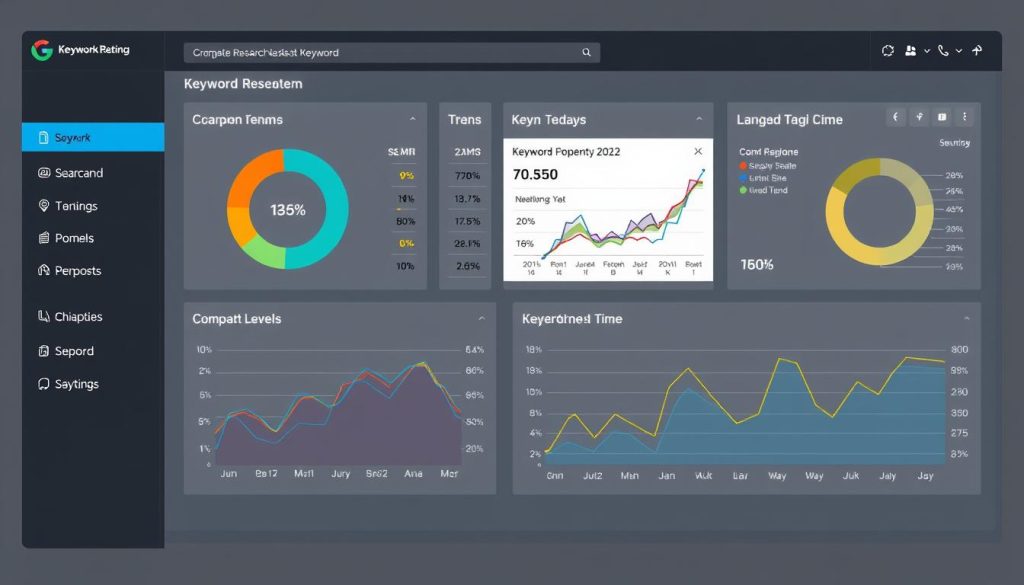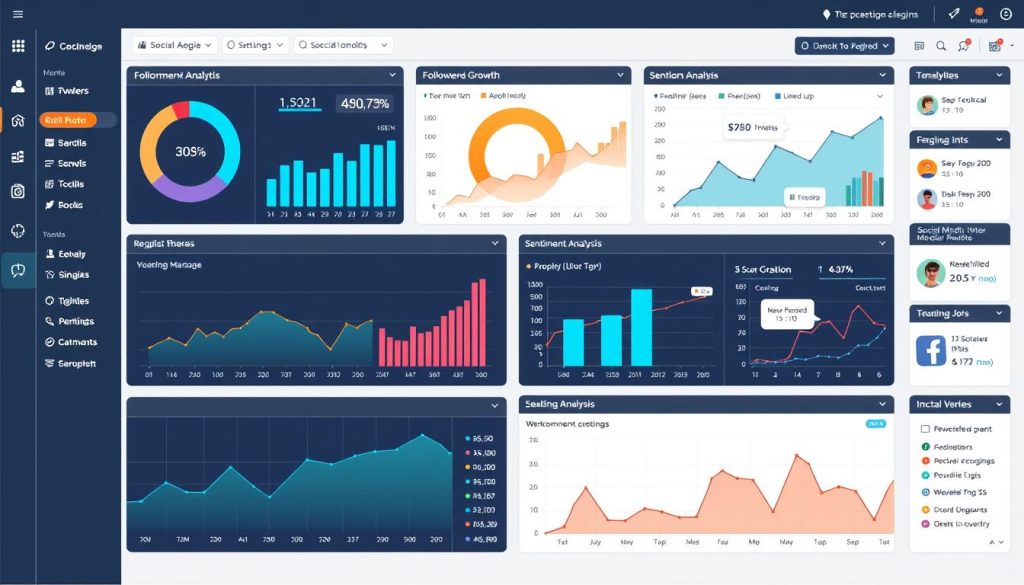As an independent professional, navigating the ever-changing landscape of market demand can be daunting. The ability to adapt to these changes is crucial for sustaining a successful career.
In today’s fast-paced business environment, understanding the needs of your clients and the trends that drive them is essential. By staying attuned to market demand, you can position your services to meet the evolving needs of your clients, ensuring your continued relevance and success.
Our comprehensive guide will walk you through the process of identifying, analyzing, and responding to demand in your industry. By mastering these principles, you’ll be better equipped to make informed decisions about your career, from pricing and service development to marketing strategies.
Table of Contents
Key Takeaways
- Understand the importance of adapting to market demand for independent professionals.
- Learn how to identify and analyze demand in your industry.
- Discover strategies for adjusting your services to meet evolving client needs.
- Gain insights into making informed decisions about pricing and marketing.
- Develop a sustainable career by staying attuned to market trends.
Understanding Market Demand for Independent Professionals
The landscape of independent careers is significantly influenced by market demand, making it essential to comprehend its dynamics. Independent professionals must navigate a complex environment where various factors intersect to shape the opportunities available to them.
Definition of Market Demand in the Context of Independent Careers
Market demand refers to the total quantity of a particular service or skill that buyers are willing to purchase at a given price level. For independent professionals, understanding this concept is vital as it directly impacts their ability to secure clients and projects. Consumer preferences, income levels, and the availability of substitutes are among the factors that influence market demand.
Why Market Demand Matters for Freelancers and Solopreneurs
Market demand is crucial for freelancers and solopreneurs because it dictates the viability of their services. When demand is high for a particular skill set, independent professionals can command higher rates and enjoy more consistent workflow. Conversely, low demand can lead to reduced earnings and increased competition. By staying attuned to market demand, independent professionals can adjust their offerings to meet the needs of their clients.
The Relationship Between Skills and Market Demand
The value of professional skills fluctuates based on market demand. Skills that are in high demand, such as those that address emerging business problems or new regulatory requirements, can command premium rates. Independent professionals must regularly assess their skill portfolio to ensure it aligns with current and projected market demand. This involves not only developing skills that are in demand but also being aware of the potential for automation and focusing on skills that require human expertise.
- The value of professional skills fluctuates based on market demand, with some capabilities commanding premium rates while others become commoditized.
- Independent professionals must regularly assess how their skill portfolio aligns with current and projected market demand to maintain their competitive edge.
- Skills that solve emerging business problems or address new regulatory requirements often experience rapid demand growth and corresponding price premiums.
Identifying Current Market Demand in Your Field
Identifying current market demand in your field is a critical step towards achieving professional success as an independent professional. To stay competitive, you need to understand what’s currently in demand and anticipate future trends.
Researching Industry Trends and Growth Areas
To research industry trends, start by analyzing reports from reputable sources such as industry-specific publications and market research firms. Look for patterns in consumer behavior and emerging technologies.

Analyzing Job Boards and Freelance Platforms
Job boards and freelance platforms are valuable resources for understanding market demand. Analyze the types of projects and skills in high demand. Popular platforms include Upwork, Freelancer, and Fiverr.

Monitoring Client Requests and Feedback
Client feedback is a direct insight into evolving needs and expectations. Patterns in client requests often signal emerging demand trends. Analyze client feedback to identify gaps between your current services and actual market needs.
- Client feedback provides direct insights into evolving needs and expectations.
- Patterns in client requests often signal emerging demand trends.
- Analyzing the types of revisions and adjustments clients request reveals gaps between current service offerings and actual market needs.
- Proactively soliciting client input about future challenges and priorities helps anticipate demand shifts.
- Maintaining open communication channels with past clients creates opportunities to identify new service needs as their businesses evolve.
By following these strategies, you can effectively identify current market demand and adjust your services to meet the evolving needs of your clients, ultimately driving your success as an independent professional.
Tools for Analyzing Market Demand
Market demand analysis is a vital component of a successful independent career, and there are several tools that can help.
Keyword Research Tools for Demand Analysis
To understand what services are in demand, independent professionals can utilize keyword research tools. These tools help identify relevant keywords and phrases that potential clients are searching for online.

Social Listening Platforms
Social listening platforms enable independent professionals to monitor conversations related to their industry, providing insights into market demand and trends.

Market Research Resources for Independent Professionals
Several market research resources are available to independent professionals, including industry reports, professional associations, government economic data, client surveys, and competitive analysis tools.
- Industry reports from organizations like IBISWorld, Gartner, and Forrester provide valuable market size and growth projections.
- Professional associations often publish specialized research on industry trends and challenges.
- Government economic data and reports highlight broader market shifts.
- Client surveys and interviews provide direct insights into evolving needs and service expectations.
- Competitive analysis tools help independent professionals understand how others are positioning their services.
Factors Influencing Market Demand for Independent Services
Understanding the factors that influence market demand is crucial for independent professionals to adapt and thrive. Several key elements shape the demand for independent services, and being aware of these can help professionals stay ahead in their respective markets.
Economic Conditions and Their Impact
Economic conditions significantly affect market demand for independent services. During economic growth, businesses are more likely to invest in specialized services, increasing demand for independent professionals. Conversely, economic downturns may lead to decreased demand as businesses tighten their budgets. Staying informed about economic trends can help independent professionals anticipate and adjust to changes in demand.
Technological Advancements and Skill Requirements
Technological advancements continually reshape the landscape of independent services. As new technologies emerge, the demand for skills related to these technologies increases. Independent professionals must continuously update their skill sets to remain relevant and meet the evolving needs of their clients.
Industry-Specific Factors and Regulations
Industry-specific factors, including regulatory changes, play a crucial role in shaping market demand. For instance, new regulations can create a surge in demand for compliance expertise. Independent professionals who stay abreast of these changes can capitalize on emerging opportunities. As noted by industry experts, « Regulatory changes frequently create immediate demand for compliance expertise and implementation support from independent professionals. »
Other industry-specific factors, such as consolidation and competitive pressures, also drive demand for specialized services. Understanding these dynamics can help independent professionals position themselves effectively in the market.
Forecasting Future Market Demand

Independent professionals who can accurately forecast market demand are better positioned to make informed business decisions. By anticipating changes in demand, they can adjust their strategies to stay competitive.
Identifying Emerging Trends in Your Industry
To forecast future market demand, it’s essential to identify emerging trends in your industry. This involves staying up-to-date with the latest developments and technologies that could impact your services. Monitoring industry reports and research studies can provide valuable insights into potential future trends.
Anticipating Client Needs Before They Arise
Anticipating client needs before they arise is a critical aspect of forecasting market demand. By analyzing client feedback and market data, independent professionals can identify potential future needs and develop strategies to meet them. As the saying goes, « The best way to predict the future is to create it. » – Abraham Lincoln.
« The best way to predict the future is to create it. » – Abraham Lincoln
Creating Demand Forecasts for Your Services
Creating demand forecasts involves using historical data and market analysis to predict future demand. Independent professionals can use various tools and techniques, such as scenario planning and quantitative demand forecasting, to develop accurate forecasts. By segmenting demand forecasts by service type, client industry, and geographic market, professionals can gain more actionable insights.
By following these strategies, independent professionals can improve their ability to forecast future market demand and make informed decisions about their business.
Adapting Your Skills to Meet Market Demand
As an independent professional, staying ahead of market demand requires a keen understanding of your current skills and their alignment with evolving client needs. To achieve this, you must be willing to assess your skill set, identify gaps, and adapt accordingly.
Assessing Your Current Skill Set Against Market Needs
Begin by evaluating your current skills against the demands of your target market. This involves researching industry trends and analyzing job postings to understand what skills are currently in demand. You can also leverage tools like keyword research and social listening to gain insights into market needs. For more information on the skills in demand, you can visit this resource.
Strategic Upskilling and Continuous Learning
Once you’ve identified the skills in demand, it’s essential to develop a strategic plan for upskilling. This may involve pursuing online courses or certifications that enhance your existing skills. For instance, you can explore platforms offering courses on topics relevant to your field.

Developing Complementary Skills for Greater Market Appeal
Developing complementary skills is crucial for increasing your market appeal. By acquiring skills that complement your existing expertise, you can offer more comprehensive services to your clients. This might include skills like project management, strategic advisory, or business strategy development. Complementary skills create service synergies, enabling you to command premium pricing and position yourself as a strategic partner to your clients.
Pricing Strategies Based on Market Demand
As market demand fluctuates, independent professionals must adapt their pricing strategies to remain competitive. This involves understanding how to adjust prices in response to changes in demand to maintain profitability and market positioning.
Understanding Price Elasticity for Your Services
Price elasticity refers to how sensitive the demand for your services is to changes in price. Understanding this concept helps you determine whether you can increase prices without losing clients. For services with low price elasticity, demand remains relatively stable even with price increases.
Value-Based Pricing in High-Demand Markets
In high-demand markets, value-based pricing becomes particularly effective. This strategy involves setting prices based on the perceived value of your services to clients. By demonstrating high value, you can justify higher prices and capitalize on market demand. For more insights on adjusting your rates, visit this resource.
Adjusting Rates During Market Fluctuations
Market demand fluctuations require strategic rate adjustments. During high-demand periods, you can gradually increase rates for new clients while maintaining stability for existing relationships. In contrast, during economic downturns, consider flexible pricing approaches, such as alternative fee structures or scaled service options, to maintain client relationships.
Marketing Your Services to Meet Changing Demand
To thrive as an independent professional, it’s crucial to develop marketing strategies that align with shifting market demand. This involves understanding the current demand in your field and adapting your services to meet the evolving needs of your clients.
Positioning Yourself in High-Demand Niches
Identifying and positioning yourself in high-demand niches is a strategic move to increase your visibility and attractiveness to potential clients. This requires a keen understanding of the market trends and the ability to adapt your skill set accordingly.
Communicating Your Value Proposition Effectively
Effectively communicating your value proposition is critical in a competitive market. It involves clearly articulating the unique benefits and value that you bring to your clients, differentiating yourself from others, and demonstrating how your services meet the current demand.
Using Content Marketing to Demonstrate Expertise
Content marketing is a powerful tool for demonstrating your expertise and showcasing your capabilities. By creating and distributing valuable, relevant content, you can establish credibility, build trust with potential clients, and position yourself as a thought leader in your field.
- Establish authority and visibility in high-demand areas without direct selling.
- Create educational content that addresses emerging client challenges.
- Develop content formats that match client preferences.
- Share insights about market trends and best practices.
- Build an audience over time through consistent content creation.
Case Studies: Independent Professionals Successfully Adapting to Market Demand

Successful independent professionals continually assess and adapt to evolving market demand. This adaptability is crucial in today’s fast-paced business environment, where client needs and market conditions can shift rapidly. By examining real-world case studies, we can gain insights into how independent professionals navigate these changes and achieve success.
From Graphic Designer to UX/UI Specialist
One graphic designer recognized the growing demand for user experience (UX) and user interface (UI) design services. By upskilling in UX/UI design, this professional was able to transition into a more in-demand role, significantly enhancing their career prospects and client appeal. The strategic decision to adapt to market demand not only expanded their service offerings but also opened up new revenue streams.
Transitioning from Traditional Accounting to Financial Technology Consulting
A traditional accountant identified the increasing demand for financial technology (FinTech) consulting services. By developing expertise in FinTech, this professional was able to transition into a more lucrative and in-demand field. This career pivot involved acquiring new skills in financial software and technology, enabling the accountant to provide more value to clients and stay competitive in a rapidly changing market.
How a Freelance Writer Evolved into a Content Strategy Consultant
A freelance writer noticed a growing client demand for strategic guidance beyond content creation. In response, the writer developed expertise in content performance analytics, audience research, and content distribution strategies. This evolution transformed the writer’s business model from project-based writing to ongoing strategic advisory relationships, creating more stable income and higher perceived value. The table below summarizes the key aspects of these case studies.
| Professional | Original Service | New Service | Key Skills Acquired |
|---|---|---|---|
| Graphic Designer | Graphic Design | UX/UI Design | User Research, Prototyping |
| Traditional Accountant | Accounting | FinTech Consulting | Financial Software, Technology Consulting |
| Freelance Writer | Content Creation | Content Strategy Consulting | Content Analytics, Audience Research |
Conclusion: Building a Sustainable Independent Career Through Market Responsiveness
The key to a thriving independent career lies in adapting to market demand and evolving client needs. By understanding market demand, you can make informed decisions about your services and pricing, ultimately driving your business forward.
To build a sustainable career, it’s essential to stay aware of market trends and client preferences. This involves continuously monitoring demand signals and reassessing your service offerings to meet emerging needs.
Successful independent professionals combine specialized expertise with adaptable skills, allowing them to pivot toward new opportunities. By adopting value-based pricing and effective communication strategies, you can create a foundation for long-term career sustainability.
Ultimately, the future belongs to independent professionals who can anticipate market demand shifts and position themselves at the forefront of emerging trends. By doing so, you’ll not only stay competitive but also drive your business toward growth and success.
FAQ
What is the significance of understanding consumer preferences in relation to market demand?
Understanding consumer preferences is crucial as it directly influences the total quantity of a product or service that consumers are willing to purchase at a given price. By knowing what consumers want, independent professionals can tailor their offerings to meet these needs, thereby increasing their chances of success.
How do businesses determine the right price for their products or services based on market demand?
Businesses analyze the supply and demand curve to determine the optimal price for their products or services. They also consider factors like price elasticity, competition, and consumer income to make informed decisions about their pricing strategies.
What role does market research play in understanding market demand for independent professionals?
Market research is essential for understanding the needs and preferences of the target audience. It involves gathering and analyzing data on industry trends, client requests, and feedback to identify areas of high demand and adjust services accordingly.
How can independent professionals stay ahead of the curve in terms of market demand?
By continuously monitoring industry trends, technological advancements, and client needs, independent professionals can anticipate changes in market demand and adapt their skills and services to stay relevant.
What is the relationship between market demand and the value proposition offered by independent professionals?
The value proposition offered by independent professionals should align with the needs and preferences of their target audience. By understanding market demand, professionals can tailor their services to provide the most value to their clients, thereby differentiating themselves from competitors.
How can independent professionals adjust their pricing in response to fluctuations in market demand?
Independent professionals can adjust their pricing strategies based on changes in market demand. For instance, they may adopt value-based pricing during periods of high demand or adjust their rates to remain competitive during market fluctuations.





